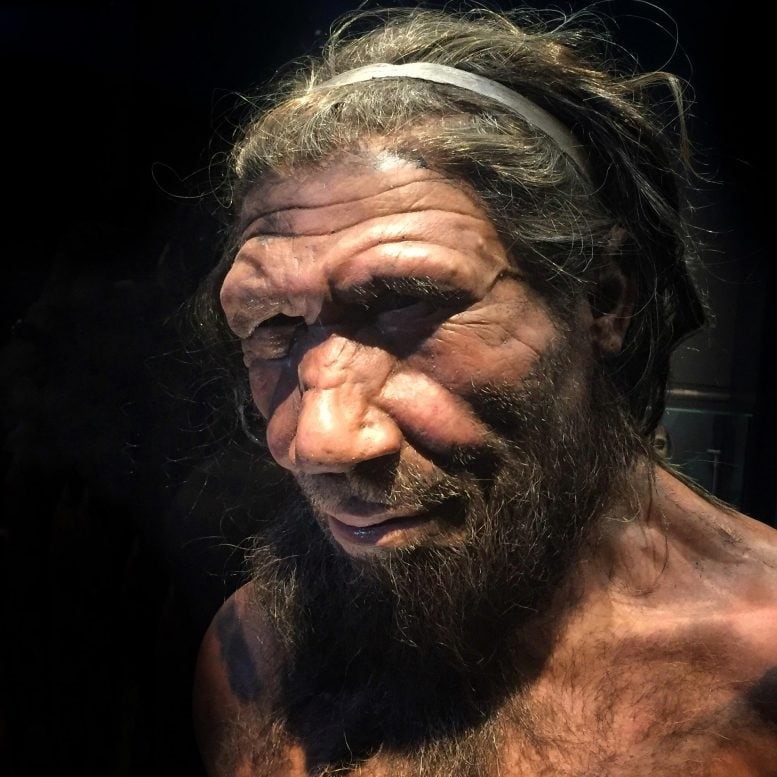New Fossil Discoveries Question Established Beliefs About Neanderthal Origins
A new study challenges the theory that Neanderthals emerged after a genetic bottleneck. Neanderthals evolved from pre-Neanderthals in Eurasia between 500,000 and 250,000 years ago, with minimal evolutionary change initially assumed. However, DNA studies reveal a major decline in genetic diversity between early and classic Neanderthals, likely due to a bottleneck around 110,000 years ago. Previously, scientists believed an earlier bottleneck marked Neanderthal origins, but this remains unconfirmed due to a lack of ancient DNA. Morphological analysis suggests continuity in diversity until a decline after the temperature peak 120,000 years ago, at the start of the Last Glacial cycle.

Figure 1. Life appearance reconstruction of a Neanderthal male.
New Insights from Inner Ear Morphology
In a study led by Alessandro Urciuoli (Institut Català de Paleontologia Miquel Crusafont, Universitat Autònoma de Barcelona) and Mercedes Conde-Valverde (Cátedra de Otoacústica Evolutiva de HM Hospitales y la Universidad de Alcalá), researchers analyzed morphological diversity in the inner ear’s semicircular canals, which play a crucial role in balance [1]. It is widely accepted that studying the morphological diversity of these structures provides results comparable to those obtained through genetic analysis. Figure 1 shows Life appearance reconstruction of a Neanderthal male.
The study examined two remarkable collections of fossil humans: one from the Sima de los Huesos site in Atapuerca (Burgos, Spain), dated to 430,000 years ago, which represents the largest sample of pre-Neanderthals in the fossil record; and another from the Croatian site of Krapina, containing the most complete collection of early Neanderthals, dated to approximately 130,000–120,000 years ago.
The researchers measured the morphological diversity (or disparity) of the semicircular canals in both fossil samples, comparing them with each other and with a group of classic Neanderthals from different time periods and geographical locations.
Key Findings: Confirming and Challenging Existing Theories
The study found that classic Neanderthals had significantly lower semicircular canal diversity than pre-Neanderthals and early Neanderthals, supporting previous genetic research. Co-author Mercedes Conde-Valverde emphasized the sharp decline in diversity between the Krapina sample and classic Neanderthals as strong evidence of a bottleneck [2]. However, lead author Alessandro Urciuoli noted that pre-Neanderthals from Sima de los Huesos showed similar diversity to early Neanderthals from Krapina, challenging the idea of a bottleneck at Neanderthal origins and suggesting alternative explanations.
Reference:
- https://scitechdaily.com/new-fossil-evidence-challenges-long-held-beliefs-about-neanderthal-origins/
- https://www.discovermagazine.com/the-sciences/10-of-the-most-important-neanderthal-fossil-discoveries
Cite this article:
Keerthana S(2025),New Fossil Discoveries Question Established Beliefs About Neanderthal Origins,pp.1107.

